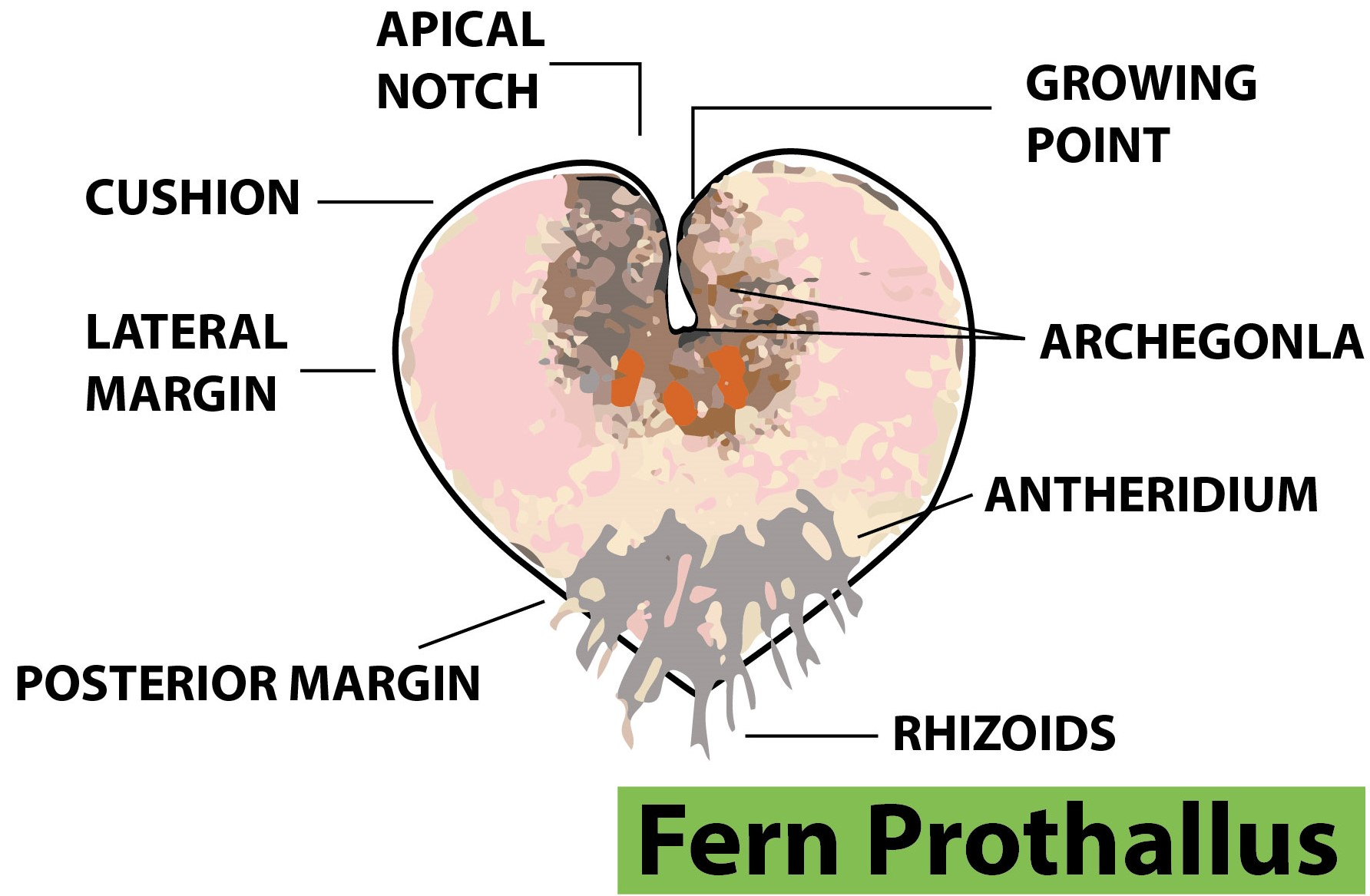
The prothallus of fern is
(a)Heart-shaped
(b)Dorsiventral
(c)Green
(d)All of the above
Answer
572.4k+ views
Hint: A prothallus, the word ‘pro’ means forwards and ‘thallus’ means twig. It is usually the gametophyte stage in the life of a fern or other pteridophyte. The prothallus develops from a germinating spore.
Complete answer:
Prothallium or prothallus is typically the gametophyte stage within the life cycle. The prothallus develops from a germinating spore. Prothallium is a short-lived and inconspicuous heart-shaped structure typically 2–5 millimeters wide, with a diversity of rhizoids (root-like hairs) growing underneath. The colors of some fern are green, they conduct photosynthesis despite others are colorless and nourish themselves underground as saprotrophs. Prothallus of fern is flat, autotrophic, dorsiventral, short-lived, about 5-10mm in size, free-living independent, nonvascular gametophyte.
Additional Information:
1. The prothallus is haploid
2. It grew from a spore which had been formed by meiosis.
3. It does not have any vascular tissue and uses small rhizoids to anchor it to the ground.
4. The sex organs: archegonia are for female and antheridium is for male. Appearance varies quite a lot between species.
5. The sperm are released by the antheridium and swim through a thin film of water to a nearby archegonium for fertilizing the egg.
Since all the given options are found in the prothallus of fern that is heart-shaped, green and dorsiventral.
So, the correct answer is 'All of the above'.
Note: After fertilization, the zygote grows into an embryo that remains attached to the prothallus. The embryonic plant depends upon the prothallus for its water and nutrients. The embryo grows and develops into a mature diploid plant, then prothallus dies. This mature plant is named the sporophyte generation since it produces spores. The sporophyte plant is the one most ordinarily recognized as a fern.

Complete answer:
Prothallium or prothallus is typically the gametophyte stage within the life cycle. The prothallus develops from a germinating spore. Prothallium is a short-lived and inconspicuous heart-shaped structure typically 2–5 millimeters wide, with a diversity of rhizoids (root-like hairs) growing underneath. The colors of some fern are green, they conduct photosynthesis despite others are colorless and nourish themselves underground as saprotrophs. Prothallus of fern is flat, autotrophic, dorsiventral, short-lived, about 5-10mm in size, free-living independent, nonvascular gametophyte.
Additional Information:
1. The prothallus is haploid
2. It grew from a spore which had been formed by meiosis.
3. It does not have any vascular tissue and uses small rhizoids to anchor it to the ground.
4. The sex organs: archegonia are for female and antheridium is for male. Appearance varies quite a lot between species.
5. The sperm are released by the antheridium and swim through a thin film of water to a nearby archegonium for fertilizing the egg.
Since all the given options are found in the prothallus of fern that is heart-shaped, green and dorsiventral.
So, the correct answer is 'All of the above'.
Note: After fertilization, the zygote grows into an embryo that remains attached to the prothallus. The embryonic plant depends upon the prothallus for its water and nutrients. The embryo grows and develops into a mature diploid plant, then prothallus dies. This mature plant is named the sporophyte generation since it produces spores. The sporophyte plant is the one most ordinarily recognized as a fern.

Recently Updated Pages
Master Class 12 Business Studies: Engaging Questions & Answers for Success

Master Class 12 Economics: Engaging Questions & Answers for Success

Master Class 12 English: Engaging Questions & Answers for Success

Master Class 12 Maths: Engaging Questions & Answers for Success

Master Class 12 Social Science: Engaging Questions & Answers for Success

Master Class 12 Chemistry: Engaging Questions & Answers for Success

Trending doubts
What is meant by exothermic and endothermic reactions class 11 chemistry CBSE

Which animal has three hearts class 11 biology CBSE

10 examples of friction in our daily life

One Metric ton is equal to kg A 10000 B 1000 C 100 class 11 physics CBSE

1 Quintal is equal to a 110 kg b 10 kg c 100kg d 1000 class 11 physics CBSE

Difference Between Prokaryotic Cells and Eukaryotic Cells




